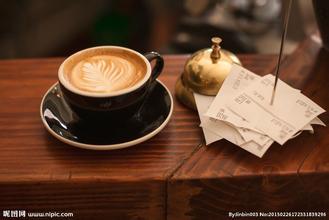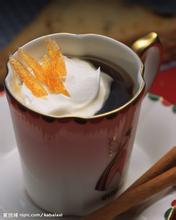Introduction to the flavor and taste characteristics of the elegant and sour Antigua Coffee Manor in Guatemala
Guatemala is located in the tropics, the northern and eastern coastal plains have a tropical rain forest climate, the southern mountains have a subtropical climate, the year is divided into two dry and wet seasons, with the wet season from May to October and the dry season from November to April of the following year. The narrow and fertile flatlands on the Pacific side of Guatemala have a tropical climate. The central plateau is also the cultural center of Guatemala, where temperatures are mild all year round at an altitude of 1300 to 1800 meters, with daily temperatures between 18 and 28 ℃, and higher levels tend to be colder in January and February. The annual precipitation is 2000-3000 mm in the northeast and 500-1000 mm in the south. The national emblem of Guatemala is round, with an unfolded scroll in the middle of the blue circle.
Guatemala
Guatemala
"Freedom, September 15, 1821" was written in Spanish to commemorate Guatemala's independence from Spanish colonial rule. A green gechar bird perches on the scroll. This is Guatemala's national bird, also known as the "Bird of Freedom", which is regarded as a symbol of freedom, patriotism and friendship. Behind the scroll are rifles and swords, symbolizing that the people of the country are always ready to defend the freedom of the motherland. The above pattern is surrounded by laurel branches around the capital Guatemala City, the largest city in Guatemala, a city in Central America. Area
Map of Guatemala
Map of Guatemala
996 square kilometers with a population of 3.1 million (2010). Founded in 1524. Due to repeated damage by the earthquake, he moved to his present site in 1776. How low buildings are in the city. It has been the capital since 1779. It was the capital of the Central American Federation from 1823 to 1838. A distribution center for coffee, corn, wheat and other agricultural products. Has more than half of the country's industries, mainly cement, wood processing, textile, tobacco, food processing and so on. Transportation hub, the railway to the northeast and southwest to the port of Barrios and San Jose respectively. There are universities (founded in 1676), academies of sciences, museums and so on. The Central American Common Market is headquartered here. There are monuments of Mayan culture on the outskirts of the city. Tourist centers include Lake Attila, the old capital of Old Guatemala, the ancient Mayan city of Tikal and some other famous cities such as Kesaltnango and Chichikas de Nango. Guatemala City is the national economic, cultural and transportation center. On the plateau of the southern volcanic area, 1493 meters above sea level, the climate is extremely mild, with flowers blooming all the year round, green grass and little seasonal change, so it is known as the "evergreen city".
The coffee beans in each producing area have their own characteristics, and they have won a lot of praise for Guatemala in the international community, especially the perfect coordination of the sour, sweet and mellow texture of Antigua; with a touch of smoke and a little more emphasis on its mystery, you will have a reason not to look for alternatives everywhere after tasting.
Guatemalan coffee beans are mostly cultivated in high-altitude volcanic soils belonging to the most advanced Arabica varieties. Due to the long ripening period, the beans are medium and dense (Guatemalan coffee beans are graded not on the basis of particle size, but on the basis of shortcomings), and the bean color is dark turquoise. The unique sour taste of fragrance, mellow, sweetness and freshness is characterized by the aroma and taste of coffee beans hidden in its sour taste. Therefore, coffee beans with this characteristic can be called first-class coffee beans. The name of the product is suitable for baking degree and taste characteristics. There are few places in the world, such as a variety of high-quality coffee beans produced in Guatemala. The excellent quality of Guatemalan coffee beans is due to the unique conditions of their origin. Including each region has different climate change, rich soil formed by volcanoes, abundant natural water resources, high-altitude mountains and shady and moist forests, Guatemala very hard beans are graceful and sour, clean and free of miscellaneous flavor, hierarchical, as well as green apple acid, berry, jasmine, orange peel, green pepper, fruit sweet and sour, chocolate sweet, and even a smoky aftertaste.
Such a rich regional flavor should be related to the soil and water in the eight major producing areas of the dangerous country. Among them, the five producing areas of Antigua, Ekat Nango Valley, Attilan, St. Mark and Huaiqiang belong to volcanic geology. In addition, Vivetta Nanguo, Koban and New Oriental producing areas belong to the climate of non-volcanic highlands or tropical rain forests. Guatemala is home to more than 300 microclimates, making it the largest in the world. Guatemala has seven major coffee producing areas: Antigua,Coban,Atitlan,Huehuetenango,Fraijanes,Oriente and San Marcos.
The coffee beans in each producing area have their own characteristics, and they have won a lot of praise for Guatemala in the international community, especially the perfect coordination of the sour, sweet and mellow texture of Antigua; with a touch of smoke and a little more emphasis on its mystery, you will have a reason not to look for alternatives everywhere after tasting.
Here, the slopes of Sierra Madre volcano provide ideal conditions for growing high-quality coffee beans, and coffee growing at high altitudes is full of vitality. Compared with other kinds of coffee, tasters prefer this mixed flavor coffee with spicy flavor. The extra-hard coffee beans here are a rare good coffee with full grains, delicious taste and balanced acidity. In addition, Guatemala has attracted a lot of attention because of its giant coffee beans.
Antigua is a famous producer of coffee. Antigua coffee is produced in Hacienda Carmona, where the best quality coffee is EL Pulcal, which is not only of good quality, but also has a stronger flavor, richer taste and stronger tobacco flavor than other Guatemalan coffee. Every 30 years or so, the area near Antigua is hit by a volcanic eruption, which provides more nitrogen to the already fertile land, and plenty of rainfall and sunlight make the place more suitable for growing coffee.
Other coffee producers include San Marco, Oriente & Coban, Palcya, Mataquescuintia and La Uman in Sakapa.

Important Notice :
前街咖啡 FrontStreet Coffee has moved to new addredd:
FrontStreet Coffee Address: 315,Donghua East Road,GuangZhou
Tel:020 38364473
- Prev

Ripe fruits, berries, caramel Panamanian Cupid Coffee Manor Flavor
Boutique Coffee beans Panama Cupid Coffee beans the Panama Canal was built by the United States and was controlled by the United States alone from 1914 to 1979. However, control of the canal was transferred to the Panama Canal Commission (a joint body jointly formed by the United States and the Republic of Panama) in 1979, and full control was formally handed over to Panama on 31 December 1999.
- Next

Introduction to the flavor and taste of the bright and fragrant Costa Rican Saint Roman Coffee Manor.
The topography of Costa Rica is that the coast is surrounded by plains, while the middle is cut off by rugged mountains. The country declared 200 nautical miles in its exclusive economic zone and 12 nautical miles in its territorial sea. The climate is tropical and subtropical, and there is also part of the new tropical Costa Rica, which accounts for only 0.03% of the world's land area, but has nearly 4% of the world's species, making it the country with the richest biological species in the world.
Related
- Detailed explanation of Jadeite planting Land in Panamanian Jadeite Manor introduction to the grading system of Jadeite competitive bidding, Red bid, Green bid and Rose Summer
- Story of Coffee planting in Brenka region of Costa Rica Stonehenge Manor anaerobic heavy honey treatment of flavor mouth
- What's on the barrel of Blue Mountain Coffee beans?
- Can American coffee also pull flowers? How to use hot American style to pull out a good-looking pattern?
- Can you make a cold extract with coffee beans? What is the right proportion for cold-extracted coffee formula?
- Indonesian PWN Gold Mandrine Coffee Origin Features Flavor How to Chong? Mandolin coffee is American.
- A brief introduction to the flavor characteristics of Brazilian yellow bourbon coffee beans
- What is the effect of different water quality on the flavor of cold-extracted coffee? What kind of water is best for brewing coffee?
- Why do you think of Rose Summer whenever you mention Panamanian coffee?
- Introduction to the characteristics of authentic blue mountain coffee bean producing areas? What is the CIB Coffee Authority in Jamaica?

